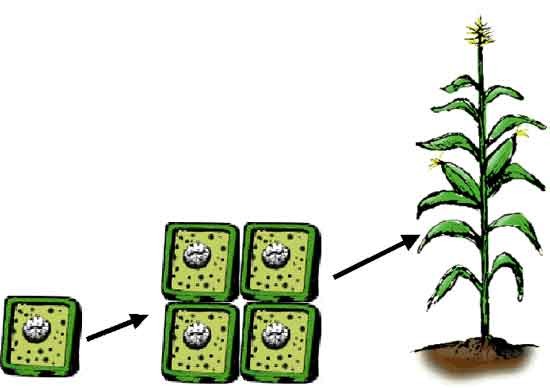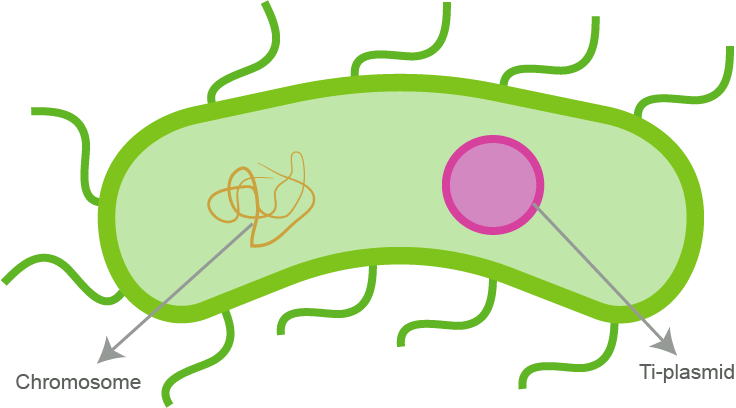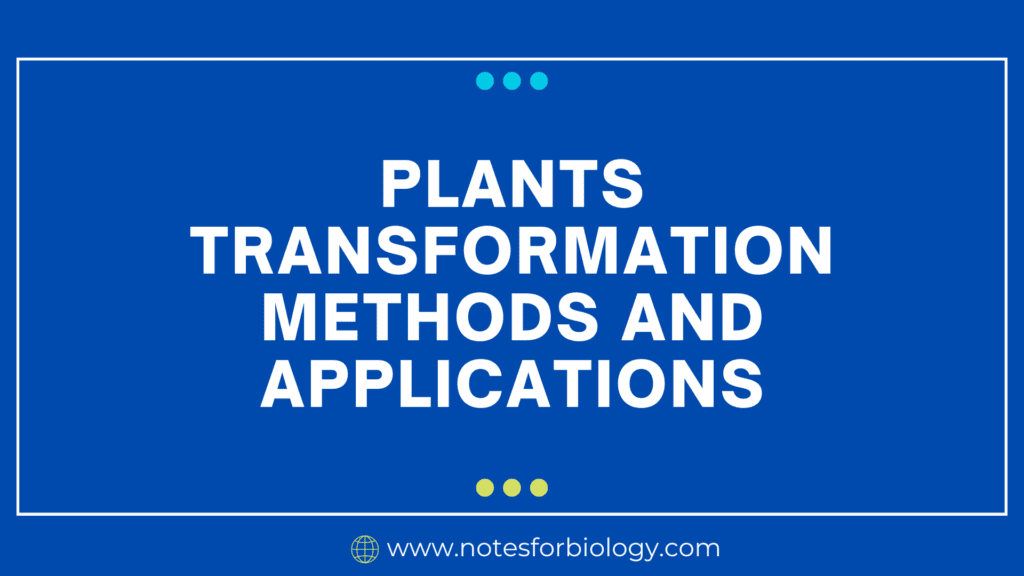What do you mean by Plants transformation ?
The process of adding new genetic material to a plant’s genome and changing its features is known as “plants transformation.” This is an effective tool for environmental research, medical, and agriculture. Here are a few of the most popular techniques:

Table of Contents
Methods of Plants transformation
Transformation Mediated by Agrobacterium

Agrobacterium tumefaciens is a naturally occurring bacteria that infects plants and incorporates its own DNA into the plant’s genome. This technique makes use of this bacteria.
Selectable marker genes and the desired gene are added to the Ti-plasmid of the bacteria.
After infecting plant cells with the modified Agrobacterium, the foreign DNA gets integrated into the plant’s chromosomes.
Tobacco, cotton, and soybean are examples of dicotyledonous plants that frequently employ this technique.
Gene Gun’s Biolistic Transformation
With this technique, DNA is delivered straight into plant cells using a high-velocity bullet.
Particles of tungsten or gold coated in the required DNA are driven into the tissues of plants.
Both monocots and dicots can be successfully transformed with this technique, which is especially helpful for resistant species that are challenging to change with conventional approaches.
The process of electroporation
This technique allows foreign DNA to enter plant cell membranes by temporarily opening pores using electrical pulses.
Plant cells are combined with DNA, then electrical impulses are applied.
Though it works better for some plant species than others, this method’s transformation efficiency is lower.
Protoplast Conversion
Using this technique, plant cells are isolated, their cell walls are removed, and the DNA is then introduced into the protoplasts, or bare cells.
There are several ways to integrate the DNA, including electroporation and polyethylene glycol (PEG)-mediated absorption.
Plants that are transgenic are frequently created using this technique.
Injection of microbes

With this technique, a tiny needle is used to directly transfer DNA into plant cells.
It is frequently used for research and calls for certain equipment.
Transformation mediated by a virus
This technique introduces foreign genes into plant cells using plant viruses.
After the desired gene has been added to the viral genome, the plant is exposed to it.
Benefits of this approach include its great efficiency and capacity to target particular tissues.
Factors to consider
Plant Species: Depending on the species, different transformation efficiencies and techniques may be needed.
Desired Gene: The method of transformation to use can be influenced by the size and complexity of the gene.
Selectable marker genes: These genes are frequently included in the transformation vector and enable the selection of successfully transformed cells.
Uses for Plants Transformation
Enhanced Yield: Increasing agricultural output through the introduction of genes that improve nutrient uptake, disease resistance, or stress tolerance.
Enhanced Nutritional Value: Increasing the vitamin content or changing the amino acid profiles of crops to improve their nutritional value.
Biopharming : Biopharming is the process of using plants to produce useful chemicals such as medications.
Enivornmental Remediation : Creating plants with the ability to eliminate pollutants from the environment is known as environmental remediation.
Ethical considerations for Plants transformation
Evaluating any risks related to genetically modified organisms being released into the environment is known as biosafety.
Ensuring the safety of genetically modified crops for human consumption is known as food safety.
Intellectual property rights, defending the interests of scientists and businesses creating genetically modified plants.
Exciting advancements in agricultural biotechnology are being brought about by the ongoing development of novel plant transformation technologies. These developments could help solve issues with global food security and pave the way for a more sustainable future.
Frequently Asked Questions(FAQ)
What do you mean by Plants Transformation?
Plants transformation is the process of adding new genetic material to a plant’s genome and changing its features.
What are the uses of Plants transformation?
The uses of Plant transformation are,
Enhanced Yield: Increasing agricultural output through the introduction of genes that improve nutrient uptake, disease resistance, or stress tolerance.
Enhanced Nutritional Value: Increasing the vitamin content or changing the amino acid profiles of crops to improve their nutritional value.
Related Articles

